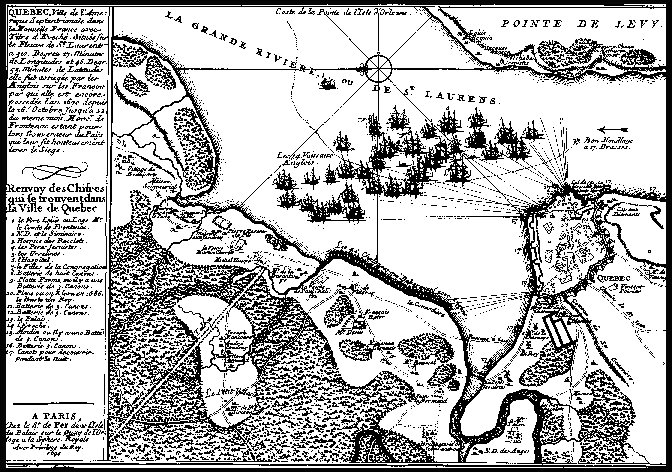http://www.francogene.com/quebec/geography.php
In
1534, the Frenchman, Jacques Cartier, made his first of three voyages to
New France, claiming possession in the name of France. The word "Canada",
at that time, designated only the region around the city of Quebec.
In
1608, another Frenchman, Samuel de Champlain, founded the city of Quebec,
the 2nd permanent French settlement after Port-Royal.
From 1621 continuously to 1993, the vital statistics of Quebec were maintained by the Catholic Church (for the Catholics), and after 1765 (for the non-Catholics) by the Ministers and Rabbis. At first, the parish registers were incomplete, but very soon thereafter they started to list the names of the parents of both spouses at the marriages... enabling Quebec to boast of its excellent old records.
Among the principal events of this period, we note the arrival of the Carignan regiment and the `Filles du Roi', as well as the progressive transformation of an economy based mainly on the fur trade to one based more and more on agriculture.
In 1759, at the Battle of the Plains of Abraham, that which was then called Canada was conquered by the British, and officially became a British possession in 1763. The British then named this region "Government of the Province of Quebec". One can say that, at that time, the Province of Quebec was made up of all the territory along the St. Lawrence River from the Gaspé peninsula to Detroit and Fort Michillimackinac (Michigan).
In 1791, the colony is organized into two provinces, Lower and Upper Canada, roughly corresponding to modern southern Quebec and Ontario. In 1840, the two provinces are re-united to form Canada East and Canada West. In 1867, they are again separated and together with New Brunswick and Nova Scotia form the federation of Canada. Later, other provinces would be added to the fold until, as of 1949, it was made up of 10 provinces and two territories.
Each province has its own method for collating vital statistics. Quebec stands out since, up to 1993, it was left to the priests to register births, deaths and marriages. Moreover, civil marriages have only been permitted since 1969.
Up to 1759, the whole population is Catholic ( no Protestant temples were permitted ) and 94% of its European immigrant population comes from France.
Since then, that part of the population that is considered French or francophone has maintained itself at 80-85%...Catholics for the most part. The other ethnic groups generally kept their religions. This is an important point because up to 1993...Quebec's official vital statistics are classified by religion. On the one hand, we have the Catholic registers where the marriages are almost always extant and complete, and are often to be found indexed in an assortment of repertories; and on the other, the non-Catholic registers where we often discover the names of the parents to be missing, at least up to the 20th. century.
It follows, therefore, that the principal tools used by Quebec genealogists are those of the Catholic Church's marriage records, mostly in repertories that have themselves been classified by county. Some databases, such as the Loiselle and the Drouin contain between 500,000 and one million names.
